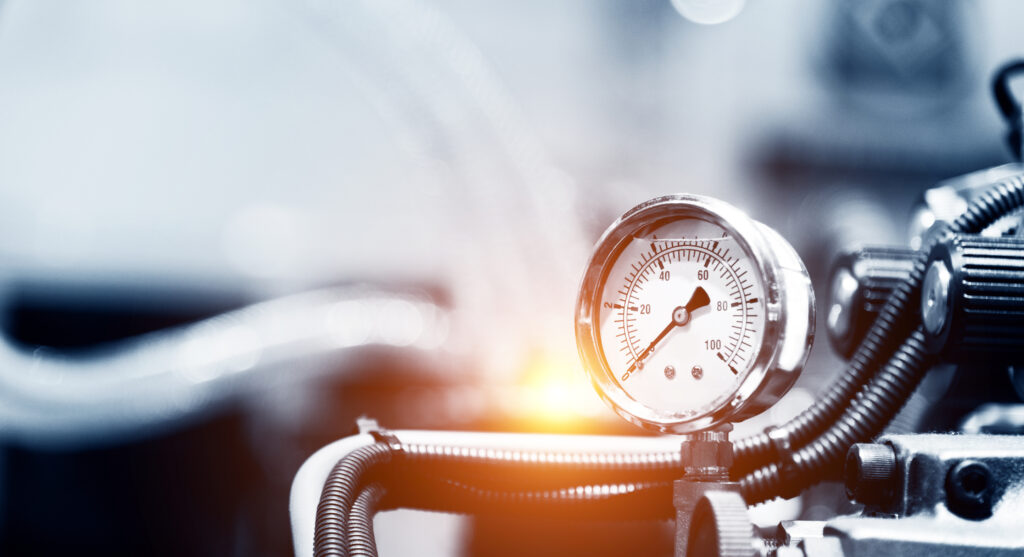
31.10.2024
CO₂ Storage; The Project Providing the Grand Overview
The project with the extensive title “Multiscale Pressure-Stress Impacts on Fault Integrity for Multi-site Regional CO2 Storage” – referred to as MuPSI, aims to address challenges related to pressure impact and infrastructure sharing in broadly developed geological formations.
As part of the energy transition, this project focuses on developing safe, efficient solutions capable of meeting climate goals on a gigaton scale. NORCE Research Director and Adjunct Professor Sarah Gasda explains the objectives of the MuPSI project. Together with scientific findings presented at the GHGT-17 conference in Calgary, she provides an overview of MuPSI’s work on pressure management and risk minimization in CO2 storage.
The CLIMIT programme has invested in international collaboration for many years. Initially through Accelerating CCS Technologies (ACT), and now through a new international partnership, the Clean Energy Transition Partnership (CETP). The MuPSI project is supported through CETP, meaning that Norwegian partners receive financial support from CLIMIT, while foreign partners are funded by agencies in their respective countries.

Background and Main Objectives of MuPSI
The MuPSI project is organized in collaboration with partners from the United States, Scotland, Spain, and the Netherlands – where technical expertise and experience are shared to develop standardized and scalable solutions. The Norwegian portion of the project begins at the start of the new year. Sarah Gasda emphasizes that MuPSI’s technical aspects are demanding, and good teamwork is essential for safe implementation of these methods.
MuPSI is designed to enable carbon storage at a gigaton scale, necessary to meet the international climate goals set by the IPCC. Achieving this scale requires developing shared CO2 hubs, allowing multiple stakeholders to utilize common storage areas and surface infrastructure cost-effectively. Such hubs could also reduce logistical costs and simplify the overall management of CO2 storage. At the same time, sharing storage infrastructure introduces new challenges, as pressure increases from one actor could impact neighbouring licenses. This can create complex ripple effects requiring careful risk management, monitoring, and modelling.
Technological and Geological Challenges
CCS relies on the ability to securely store CO2 in underground formations. The MuPSI project focuses particularly on how CO2 injection pressure can be managed when multiple actors, operate within the same area. Gasda describes how aging storage fields, the development of renewable energy sources, and the integration of sustainable solutions are central to MuPSI.
– We must ensure that technical and environmental requirements are met in all aspects of storage, says Gasda. This entails thorough testing and modelling to ensure safe and reliable storage over time.
Research shows that pressure from CO2 injection can move faster and over greater distances. This is a critical factor, as pressure displacement can affect nearby licenses – potentially reducing available storage capacity due to increased risk of leakage and seismic events.
MuPSI is developing hierarchical models that combine regional pressure and stress analysis with detailed local simulations. This enables monitoring of pressure conditions across larger areas, while accounting for specific geological features at the local level. This is essential for evaluating the risks associated with pressure increases, giving operators an accurate assessment of how much CO2 they can safely inject, without negatively impacting other stakeholders in the area.
Infrastructure and Pressure Impact
According to Gasda, one of the benefits of considering overarching infrastructure for CO2 storage, is that it enables injection and storage of large amounts of CO2 from multiple actors in a cost-effective manner.
Northern Lights is an example of how shared resources can be used for CO2 injection. Northern Lights acts as a hub that can receive CO2 from multiple sources, and store it in underground formations in the North Sea. Such hubs require advanced pressure management models, as pressure from one actor may influence the capacity plans of neighbouring licenses.
The MuPSI project examines how CO2 injections from multiple actors in the same area can lead to overlapping pressure zones, which could affect the storage capacity of different stakeholders. – In practice, this means neighbouring injections could impact the capacity an operator believes they have available, Gasda continues. If one actor has sold storage capacity and later discovers that neighbouring injections alter pressure conditions, it may be necessary to adjust agreements. To reduce the risk of unforeseen changes in capacity, MuPSI views the entire region as a single resource, planning storage capacity as a unified entity. This approach facilitates better risk management, cost control, and long-term, purposeful planning.
Experience from Oil and Gas Activities
In addition to new CO2 injections, MuPSI must consider previous oil and gas activity in the area. According to Gasda, pressure changes resulting from oil and gas production can affect how much CO2 can be safely stored over time. Research shows that geological formations previously exposed to extraction, may have entirely different pressure conditions than undeveloped areas.
– This is especially true in areas where large amounts of hydrocarbons have been extracted, Gasda explains. She notes that pressure conditions in such fields may require customized models, to understand the changes that occur when new CO2 injections begin in the same area.
Long-term Predictions and Risk Management
Sarah Gasda explains that the prediction timeframe in MuPSI spans several decades, which is essential for a project aiming to store large amounts of CO2 over time. – With a thorough understanding of the geology, we can develop predictions that provide a realistic picture of future pressure conditions, covering all potential scenarios, she says. Research shows that long-term models offer more robust planning support, allowing stakeholders to base decisions on more reliable forecasts.
International Collaboration and Knowledge Sharing
DInternational collaboration in the MuPSI project is essential. Gasda emphasizes the value of working with partners from, among others, Scotland and the United States. Scottish partners contribute expertise in geomechanics and field measurements. Research partners from Spain bring strong theoretical knowledge. They participate to learn from the project and build their knowledge of CO2 storage. – For the Spanish, this is an opportunity to learn from our experience with real models and projects, gaining practical insights that could support CO2 storage projects in Southern Europe, where this technology is less developed, she says.
The MuPSI project facilitates the exchange of technical insights that could have broad international applications. By using case studies and comparative data from the United Kingdom, MuPSI can analyse different geological structures’ responses to CO2 storage under varying conditions. This provides valuable insights into which solutions may be most effective in various regions.

Longship and Northern Lights
MuPSI is relevant to Northern Lights, a hub for offshore CO2 injection in Norway – and an important part of the Longship project. Gasda points out that MuPSI aims to provide insights into how activities by other operators might impact licenses around the Northern Lights area.
– Our work provides insights into planning and ensuring optimal use of shared infrastructure on a large scale, Gasda explains. This helps maximize resource utilization while reducing the risk of one operator’s activities negatively impacting another.
MuPSI’s work on pressure management is a key piece in scaling carbon storage to gigaton levels. By developing a structure that grants all stakeholders access to reliable, up-to-date information on pressure conditions, MuPSI contributes to making carbon capture and storage even safer and more efficient.
